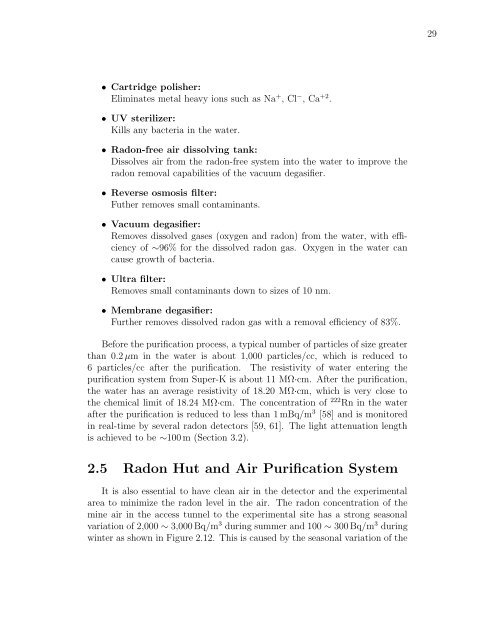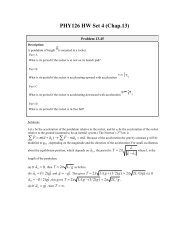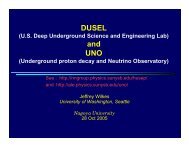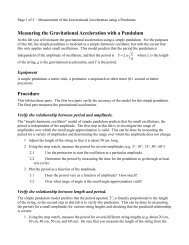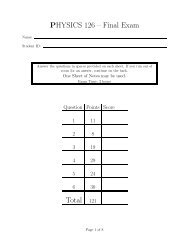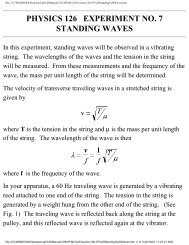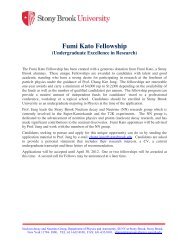Tau Neutrino Appearance via Neutrino Oscillations in Atmospheric ...
Tau Neutrino Appearance via Neutrino Oscillations in Atmospheric ...
Tau Neutrino Appearance via Neutrino Oscillations in Atmospheric ...
Create successful ePaper yourself
Turn your PDF publications into a flip-book with our unique Google optimized e-Paper software.
29• Cartridge polisher:Elim<strong>in</strong>ates metal heavy ions such as Na + , Cl − , Ca +2 .• UV sterilizer:Kills any bacteria <strong>in</strong> the water.• Radon-free air dissolv<strong>in</strong>g tank:Dissolves air from the radon-free system <strong>in</strong>to the water to improve theradon removal capabilities of the vacuum degasifier.• Reverse osmosis filter:Futher removes small contam<strong>in</strong>ants.• Vacuum degasifier:Removes dissolved gases (oxygen and radon) from the water, with efficiencyof ∼96% for the dissolved radon gas. Oxygen <strong>in</strong> the water cancause growth of bacteria.• Ultra filter:Removes small contam<strong>in</strong>ants down to sizes of 10 nm.• Membrane degasifier:Further removes dissolved radon gas with a removal efficiency of 83%.Before the purification process, a typical number of particles of size greaterthan 0.2 µm <strong>in</strong> the water is about 1,000 particles/cc, which is reduced to6 particles/cc after the purification. The resistivity of water enter<strong>in</strong>g thepurification system from Super-K is about 11 MΩ·cm. After the purification,the water has an average resistivity of 18.20 MΩ·cm, which is very close tothe chemical limit of 18.24 MΩ·cm. The concentration of 222 Rn <strong>in</strong> the waterafter the purification is reduced to less than 1 mBq/m 3 [58] and is monitored<strong>in</strong> real-time by several radon detectors [59, 61]. The light attenuation lengthis achieved to be ∼100 m (Section 3.2).2.5 Radon Hut and Air Purification SystemIt is also essential to have clean air <strong>in</strong> the detector and the experimentalarea to m<strong>in</strong>imize the radon level <strong>in</strong> the air. The radon concentration of them<strong>in</strong>e air <strong>in</strong> the access tunnel to the experimental site has a strong seasonalvariation of 2,000 ∼ 3,000 Bq/m 3 dur<strong>in</strong>g summer and 100 ∼ 300 Bq/m 3 dur<strong>in</strong>gw<strong>in</strong>ter as shown <strong>in</strong> Figure 2.12. This is caused by the seasonal variation of the


